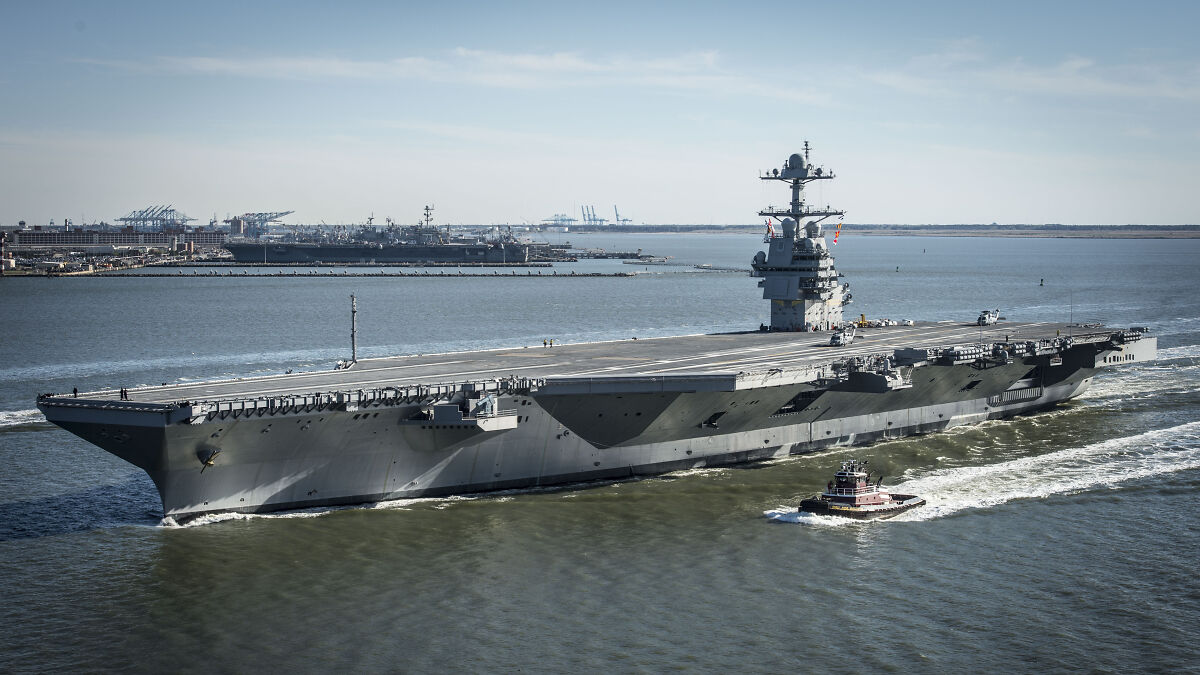
U.S. Navy’s Largest Aircraft Carrier Heads To Caribbean Amid Rising Tensions With Venezuela
The U.S.S. Gerald R. Ford has been photographed leaving Croatia after Secretary of War Pete Hegseth ordered it to be deployed to the Caribbean.
The aircraft carrier will reportedly join a major U.S. military buildup in the region as President Donald Trump amps up pressure on Venezuela.
Tensions between the two nations have skyrocketed, with the Trump administration launching an operation it claims is targeting “narco-terrorist networks.”
- The U.S.S. Gerald R. Ford left Croatia to join a major U.S. military buildup in the Caribbean amid rising tensions with Venezuela.
- The deployment responds to Trump administration efforts targeting 'narco-terrorist networks' threatening U.S. security.
- The carrier represents next-gen naval power with 75+ aircraft, nuclear reactors, and a $13 billion construction cost.
The U.S.S. Gerald R. Ford is sailing to the Caribbean
Image credits: Mass Communication Specialist 2nd Class Ridge Leoni/U.S. Navy via Getty Images
Venezuelan President Nicolas Maduro has accused the U.S. of planning to destabilize his government under the guise of anti-drug operations.
Since August, the U.S. has deployed around 10,000 troops to the Caribbean and Puerto Rico.
The U.S.S. Gerald R. Ford was photographed leaving Split, Croatia, on Sunday, October 26, to add to that deployment.
It was earlier deployed to Europe as part of efforts to strengthen deterrence and demonstrate U.S. commitment to protecting NATO allies from potential aggression.
The repositioning of the Ford to the Americas is a notable shift in focus for the Navy, as U.S. carriers more often operate in the Atlantic, Mediterranean, or Indo-Pacific regions.
USS Gerald R. Ford (CVN 78) Gerald R. Ford-class aircraft carrier leaving Split, Croatia for assumed Caribbean deployment – October 26, 2025 SRC: TW-@en_vildpic.twitter.com/ofyocWOq6i
— WarshipCam (@WarshipCam) October 26, 2025
Chief Pentagon spokesman Sean Parnell last week said the Ford was being sent to the Southern Command region in support of Trump’s directive to counter “narco-terrorism.”
“The enhanced U.S. force presence in the USSOUTHCOM AOR will bolster U.S. capacity to detect, monitor, and disrupt illicit actors and activities that compromise the safety and prosperity of the United States homeland and our security in the Western Hemisphere,” Parnell said.
“These forces will enhance and augment existing capabilities to disrupt narcotics trafficking and degrade and dismantle TCOs.”
The Ford is the largest and most advanced aircraft carrier in the world, representing the next generation of American naval power.
Image credits: Andrew Harnik/Getty Images
Construction on the ship, named after the 38th president of the U.S., Gerald R. Ford, began in 2009 and it was commissioned into service on July 22, 2017.
The warship features two state-of-the-art A1B nuclear reactors, which allow it to operate for decades without refueling, and it cost around $13 billion to build, according to the Congressional Research Service.
The carrier can deploy over 75 aircraft and supports a crew of about 4,500 sailors and air personnel.
According to Newsweek, the Ford Strike Group includes nine aircraft and helicopter squadrons aboard the carrier, along with at least five accompanying destroyers.
Two of those destroyers, the U.S.S. Forrest Sherman and U.S.S. Mitscher, have recently been active in the Middle East.
The Ford’s deployment comes amid rising tensions between the U.S. and Venezuela
Image credits: Chief Mass Communication Specialist Christopher Delano/U.S. Navy via Getty Images
It is not yet confirmed whether they will depart their current positions in the Red Sea and Arabian Sea to rejoin the rest of the strike group.
The deployment comes after the head of the U.S. military’s Southern Command, Adm. Alvin Holsey, announced his intention to retire at the end of the year, less than a year into his three-year term.
Reports claimed that the announcement was made after Holsey had a tense exchange with Hegseth over recent naval strikes in the Caribbean.
The U.S. has been carrying out strikes on vessels in international waters, killing alleged drug traffickers onboard.
Image credits: Tasos Katopodis/Getty Images
At least 43 people have been killed in the strikes, which began on September 2.
There are concerns regarding the legality of those strikes, considering they occurred in international waters and no efforts were made to intercept the vessels beforehand.
Trump has also confirmed that he authorized the CIA to conduct covert operations in Venezuela and signaled the military could move to land strikes against alleged drug cartels.
Earlier this year, the Trump administration described Venezuela’s Maduro as one of the largest narco-traffickers in the world and offered a $50 million reward for information leading to his arrest.
Image credits: Alfredo Lasry R/Getty Images
Maduro has been readying his own military forces and bragged about possessing a stockpile of Russian-made weapons.
He told state media last week that the U.S. was “fabricating” a war after the Pentagon announced the Ford’s deployment.
“They promised they would never again get involved in a war, and they are fabricating a war,” he told state media, according to the BBC.
Poll Question
Thanks! Check out the results:
I don't have any beef with Venezuela. They are not a threat to the US. Does anyone else feel threatened by them here? Wars are all started by petty minded power hungry psychopaths that take over countries. This one will be Trump's Viet Nam.
I don't have any beef with Venezuela. They are not a threat to the US. Does anyone else feel threatened by them here? Wars are all started by petty minded power hungry psychopaths that take over countries. This one will be Trump's Viet Nam.



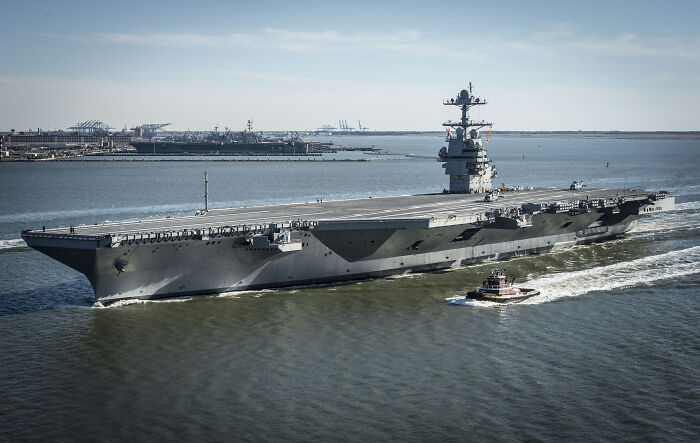
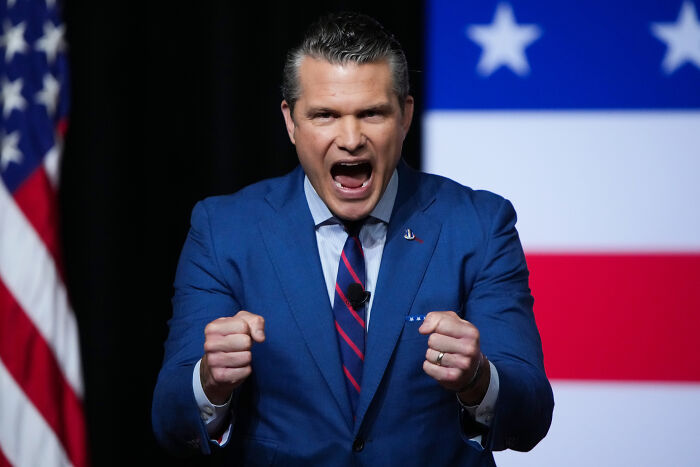
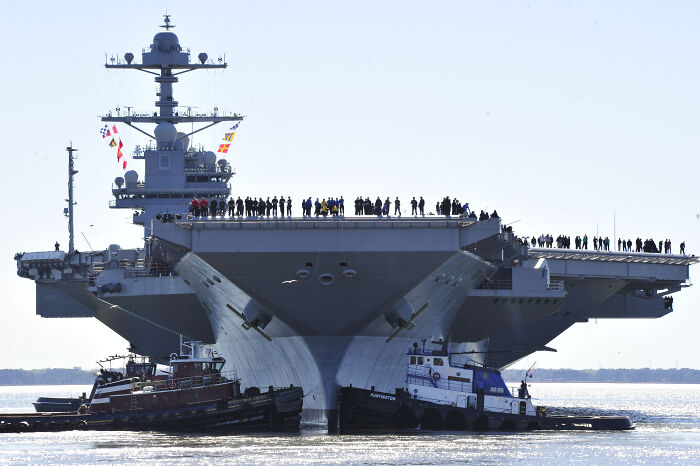
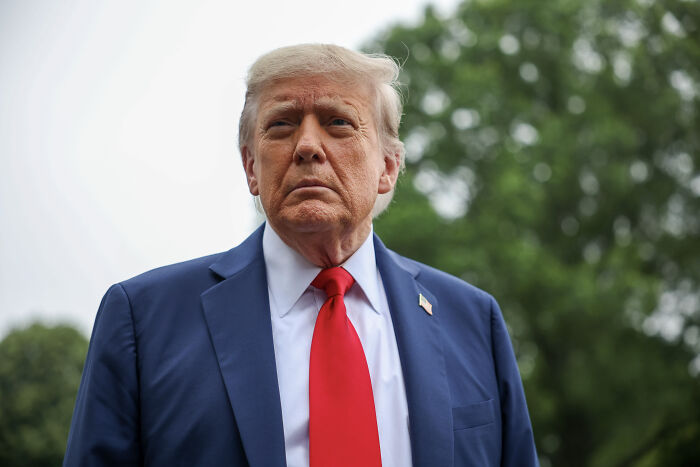
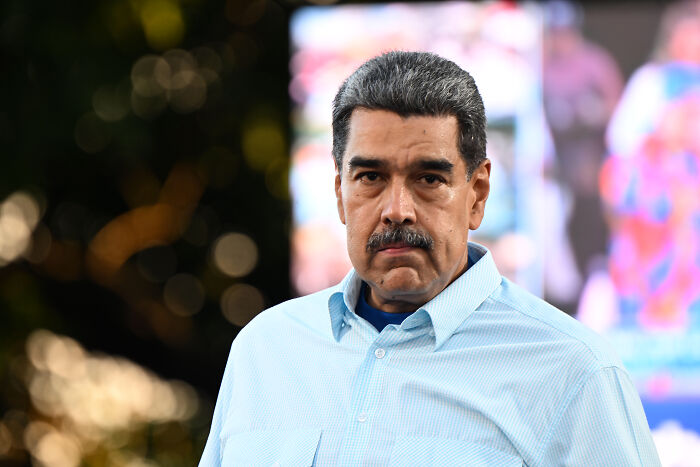



15
1